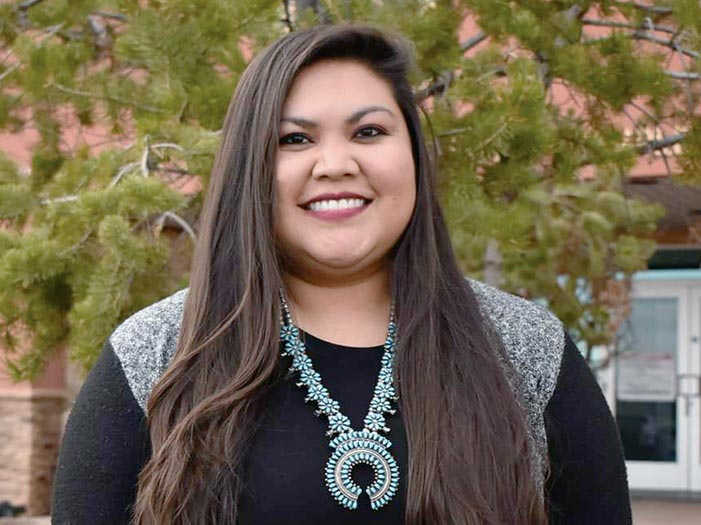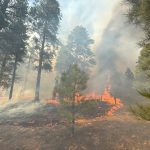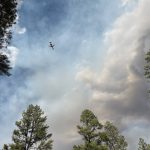
Survey shows more than half of Hardship spent off-rez
WINDOW ROCK

Courtesy photo | Division of Economic Development
Thirty-two-year-old Alisha Murphy became the Navajo Nation’s first economist last November.
If you want to support the Navajo Nation’s new economist, Alisha L. Murphy, consider participating in her first online survey that is analyzing how CARES Act Hardship Assistance recipients have spent their money.
“This survey is a piece of a puzzle we need to analyze when we’re looking at the Navajo economy,” said Murphy. “Participation from the Navajo people near and far will help us to understand what the needs and demands are for consumption and products.
“We want primary data from the source,” she said, “and your answers are important.”
Participation in the survey (www.surveymonkey.com/r/NNHACIS) is voluntary and responses will be kept anonymous.
Murphy, 32, from Crownpoint, is studying for a doctorate in economic development at New Mexico State University.
She was hired in November as the Division of Economic Development’s first-ever economist, a position championed by DED Director JT Willie.
“I’ve always been interested in tribal economics and always envisioned myself returning back to my community to work,” she said.
Murphy also earned a bachelor’s degree in social work and a master’s in economics at NMSU.
She is vice-chair of The Global Centre of Indigenomics and received a 2021 Native American “40 Under 40” leadership achievement award from The National Center of American Indian Enterprise Development.
In a report last week to the Navajo Nation Council during its winter session, Murphy told delegates that one of her main objectives is to start gathering data and information that will help guide the Nation’s economic future.
“Data is critically important to ensure that we have statistical evidence that reflects the lived experiences of our Navajo people,” she said. “The more we know the better we can plan ahead.”
By analyzing consumer spending habits of Hardship Assistance recipients, she hopes to identify trends that will reveal important information on what businesses and services are lacking on the Navajo Nation to help direct DED’s strategic goals.
So far over 1,000 people have completed the survey. Results from this preliminary sample indicate that 53% of Hardship funds have been spent off reservation.
“We’ve known for a really long time there’s a significant lack of goods and services provided on the Navajo Nation, which is why they go to border towns to spend their money,” said Murphy.
This causes “economic leakage” from the tribe, she said.
The survey, which was launched on Jan. 19 and is open until Feb. 28, has also revealed, based on responses so far, that the top five expenditures were paying bills, personal care and services, setting aside savings, automotive, food and dining.
“This list gives us an idea of demand for goods and services,” said Murphy.
This type of data will be used to develop policies on how to create a more business-friendly environment on the Nation and guide leaders in planning and decision-making, she said.
“We need to know where we stand before we can make impactful changes regarding infrastructure, health care, education and employment, business creation and, most importantly, where Navajo plans to allocate resources that we do have,” she said.
Murphy believes it is crucial that the Nation start gathering its own unbiased data rather than relying on outside sources like the census to guide policy-making and legislative initiatives.
“Data empowers the story of our Navajo people,” she said.
Murphy said she will collaborate with other Navajo government entities to do this type of research and data collection.
“It is an important tool in terms of continuing to prosper beyond COVID-19,” she said.
Learning from the past
Division Director Willie said much of the Nations’ economic development in the past was focused on the extraction of natural resources such as coal, oil and uranium.
“Much of our growth and development was based on these big industries that came to the Navajo Nation such as the Navajo Generating Station, Peabody coal mines that brought income to thousands of Navajo people,” he said.
While these industries enhanced local economies and contributed to the stabilization of the Navajo government, there were also negative impacts that are still felt to this day, he said.
Especially after the closure of NGS and Kayenta Mine in 2017, Willie said DED has been focusing more on supporting small business entrepreneurship and tourism as well renewable energy initiatives such as solar and wind projects as guided by the priorities of the president’s office, he said.
However, because of COVID-19 restrictions everything slowed down, Willie acknowledged.
“We are currently still at a standstill because of the COVID-19 pandemic, but we’re really looking forward to much prosperity moving forward,” he said.
As his department is contemplating the diversification of the Navajo economy, Willie said they are evaluating experiences of the past, incorporating their negative and positive impacts in their decision-making, and looking forward to learning from the data that Murphy will be collecting.
“We will never see the impact of revenue as we did in the past, but we can look to other areas to really diversify,” he said.
This year’s DED 2022 Navajo Nation Economic Summit, themed “Economic Prosperity Through Diversified Collaboration,” will be held on April 18 to 21 at Twin Arrows Resort Casino.
Willie also anticipates that American Rescue Plan Act funding will help boost DED’s work in supporting small businesses at the grassroots community level.
The president’s office’s original plan for ARPA spending proposed $90 million for economic development and $20 million for tourism, which is yet to be appropriated through legislation.
‘Change is good’
DED Senior Project Specialist Douglas Capitan said economic development is about improving quality of life for Navajo Nation communities.
“When you look at the success or overall well-being of a community, you look at their health, whether or not they’re able to get quality jobs,” said Capitan. “Economic development is part of the solution to a lot of those questions.”
Economic development is also a big part of revenue generation for the Navajo government, he said.
“The aim is to attract business investment or build within to help bolster existing local businesses,” he said. “When you’re able to have businesses thrive, that means that there’s more funding for schools, chapters, and infrastructure.
“All of that helps and makes our quality of life a little bit better,” he said.
Due to the COVID-19 public health emergency, many Navajo businesses had to pause operations and moving forward the emphasis will be on business resiliency as we emerge from the pandemic, he said.
“Being resilient and being able to adapt is definitely required amongst all of us,” said Capitan. “We’re always changing and that’s one of our unique characteristics.”
One of the things DED learned during the pandemic through the Navajo Economic Artisan and Business Relief Grant Program is how many people on the Navajo Nation run their own businesses.
“We have a lot of sole proprietor businesses, meaning we have a lot of individuals out there who are essentially their own boss,” he said.
Capitan offered that DED staff are available to help businesses change and adapt by examining their strengths and weaknesses and what has worked or not worked in the past in order to revise goals and plans for the future.
“Reinvent yourself, if necessary,” he said. “Change the plan, change your strategy. Change is always good. Rethink what was old and make it new again.”
Information: www.navajoeconomy.org
As a public service, the Navajo Times is making all coverage of the coronavirus pandemic fully available on its website. Please support the Times by subscribing.
How to protect yourself and others.
Why masks work. Which masks are best.
Resources for coronavirus assistance








 Highway 264,
Highway 264, I-40, WB @ Winslow
I-40, WB @ Winslow